From the book "Straight to the South", part 1 "Expedition to the heart of Sri Lanka", episode 3.
| 08.03.2018 | 7°56'30.35"N 80°59'54.23"E – ticket office and entrance to the archaeological museum |
A trip to the medieval town of Polonnaruwa - the second oldest capital of the Lankan kings, where they ruled from 1070 to 1293 years. Until this time, from the middle of the I century BC, the administrative capital of the island was the city of Anuradhapura, which we could not visit because the day before there were religious riots there, and the government temporarily restricted visiting its surroundings.
We drove with stops: souvenir shops, beggars-monkeys on roadsides.. Well, of cause we threw bananas for those pretty little guys!

Wooden carved bas-relief at the entrance to the souvenir shop
The roads of Sri Lanka are paved almost everywhere. Highways are wider but the country roads are usually narrow and requires serious driving skills to pass oncoming cars at speed. Also you should to give a signal before every turn and overtaking – it is an immutable rule here .
There is a lot of information on ancient palaces and temples of Polonnaruwa on the Internet but it is not always correct. Let's try to make our contribution to this confusion.
The Lake on the shore (where the ancient city is located) is called "the sea of Parakramabahu". It is man-made and was created under the reign of king Parakramabahu the Great (1153-1186). It includes 3 reservoirs with a total area of over 15 sq km. To construct the dam with a length of 13.6 km they used 4.5 million cubic metres of earth. It is estimated that it would take 12 years for a thousand diggers to create this dam, provided they work 24 hours a day. When the construction was completed 11 canals drained water in different directions, supplying the city and irrigating the surrounding fields and plantations.
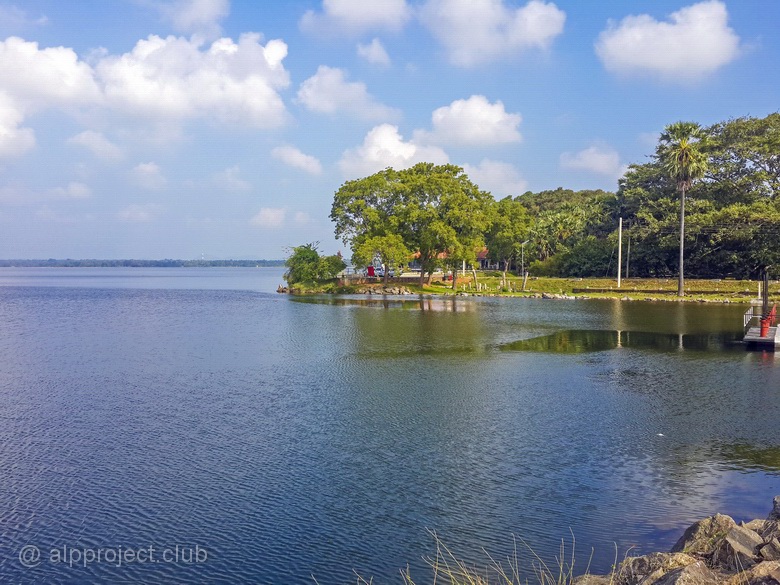
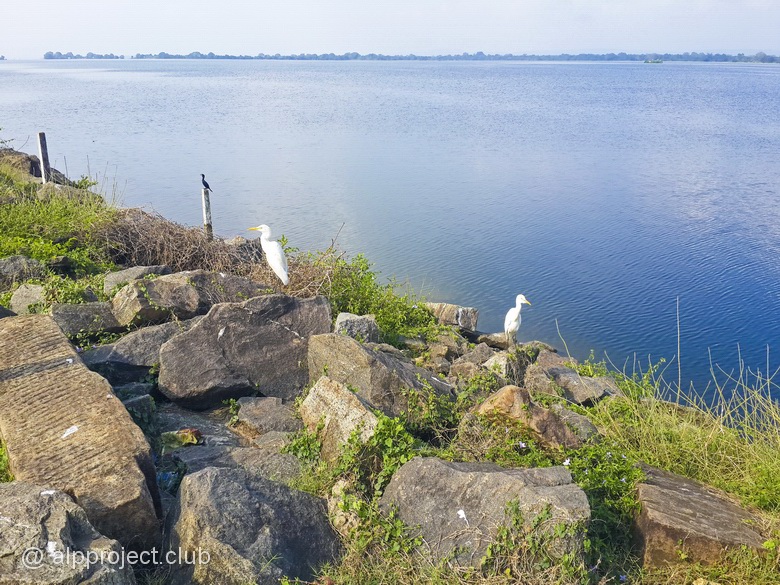
To see the ancient Polonnaruva, you need to buy tickets at the ticket office. You will be given two of them: one – to visit the archaeological Museum and the second - to entrance to the territory of the Palace complex.
The entrance to the archaeological Museum is just behind the ticket office. In the Museum, no cameras allowed, which is a pity: there are very interesting exhibits there. But information in times of Internet is becoming much available every year and you can see this collection here for example..
Park near the Museum is picturesque. No historic things are there but tropical plants are beautiful as is..



About 4500 years ago, the country was ruled by the wise man Pulasti – creator of the traditional medical system "Ayurveda". He was the grandfather of the great king Ravana, who created a highly developed civilization for his time and managed ten kingdoms at the same time. During the life of Pulasthi the city was named in his honor - Pulastipura ("Pulasthi" is the name of the ruler, "Pura" — city). Over time, this name was transformed into Polonnaruwa, and it has been one of the main cities of Lanka, even in the period when the capital of the state was Anuradhapura.
The territory of the historical complex is surrounded by a 6-kilometer wall. According to the Chronicles, the city included several thousand houses with hundreds of streets. 2-3-storey houses of merchants and aristocrats were built of brick, and the middle class and the poor people lived in houses made of clay and wood. Construction of stone buildings was considered a privilege of the king and clergy.
< br /> The Palace of king Parakramabahu are described in Chronicles in detail, mentioning seven floors and many rooms. The Palace is also known as the Vaijayanta Prasada (translated as "a huge building with all modern amenities").

There is a large hall near the entrance, it wasused as a chamber for the audience.

The walls of the building are unusually thick, the roof and floors were wooden.

You can seen the foundations of smaller buildings to the South and East of the Palace. Apparently, they were intended for Queens and other dignitaries.

Parakramabahu Council chamber is a classic example of the art of ancient masonry masters.

There is a moonstone at the beginning of the entrance stairs, the steps are decorated with statues of makara — mythical creatures of Hindu mythology. There are statues of lions above. They believed that this room was specially built by the king for meetings with his advisers and lawyers. The design of the building is not combined with ancient traditions. For example, moonstone, balustrades and other elements present here were previously used only in the construction of monasteries.

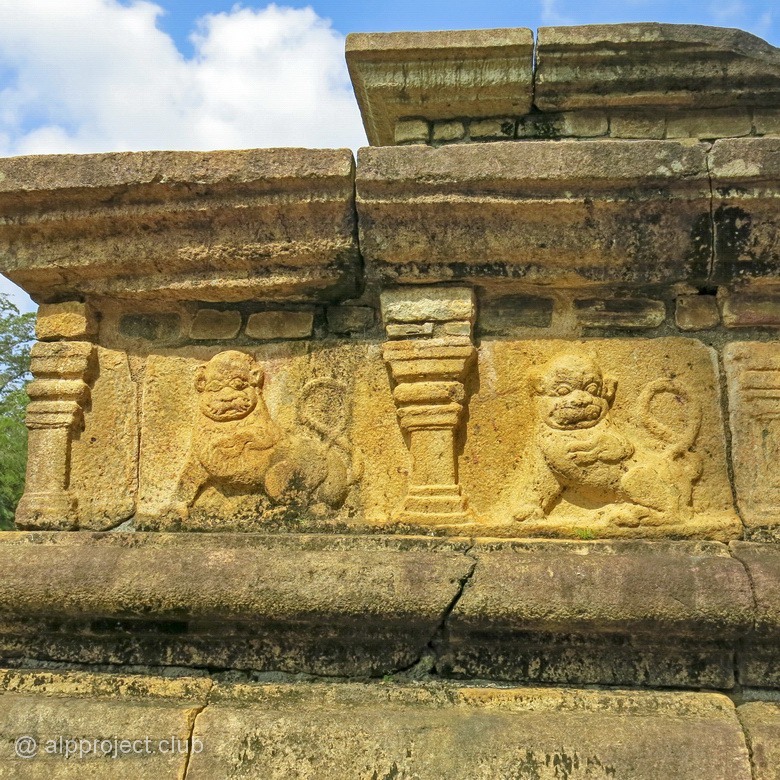


There is a parking near. I must say, to move from one historical monument to another here is much better by a car with air conditioning or on breezy tuk-tuks and motorcycles, because it is very hot on foot or by bike..

The religious heart of the ancient city – Dalala Maluwa, renamed in the late 1800s by British archaeologists to the "Sacred Quadrangle". It's a pretty long perimeter lined with shrines.
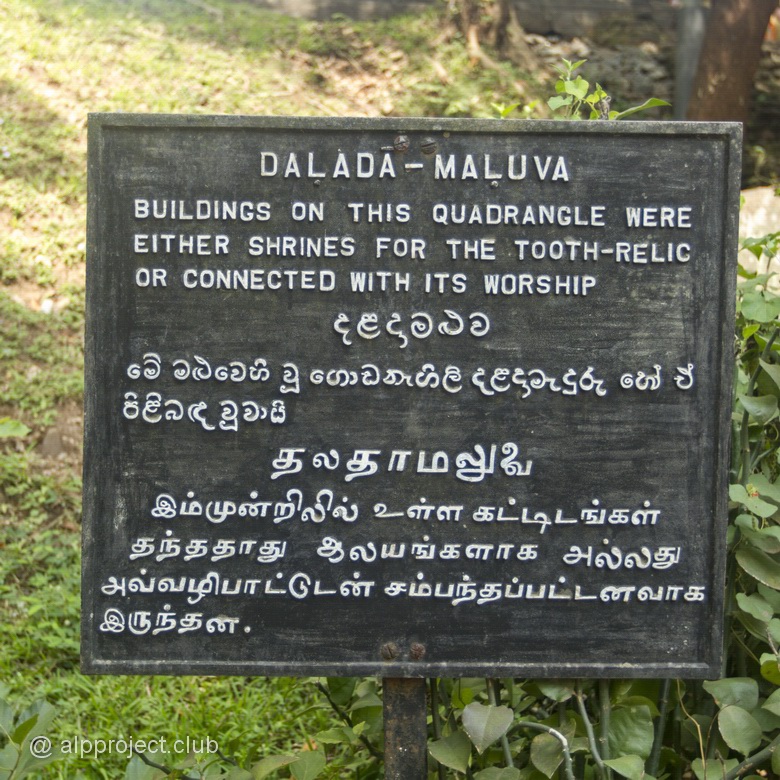
Sign at the entrance to the complex
Sinhala the word "dalala" means "tooth". This refers to the tooth of Siddhartha Gautama, a Buddha who (they believed) have visited Sri Lanka. The possession of such a relic symbolized the legitimacy of the rulers, and at a time when Polonnaruwa was the capital, it was kept here. Later it was moved to Kandy, the last capital of Sinhala until the British occupation of the island in the XIX century. We entered the sacred territory through the Eastern entrance.

Entrance staircase
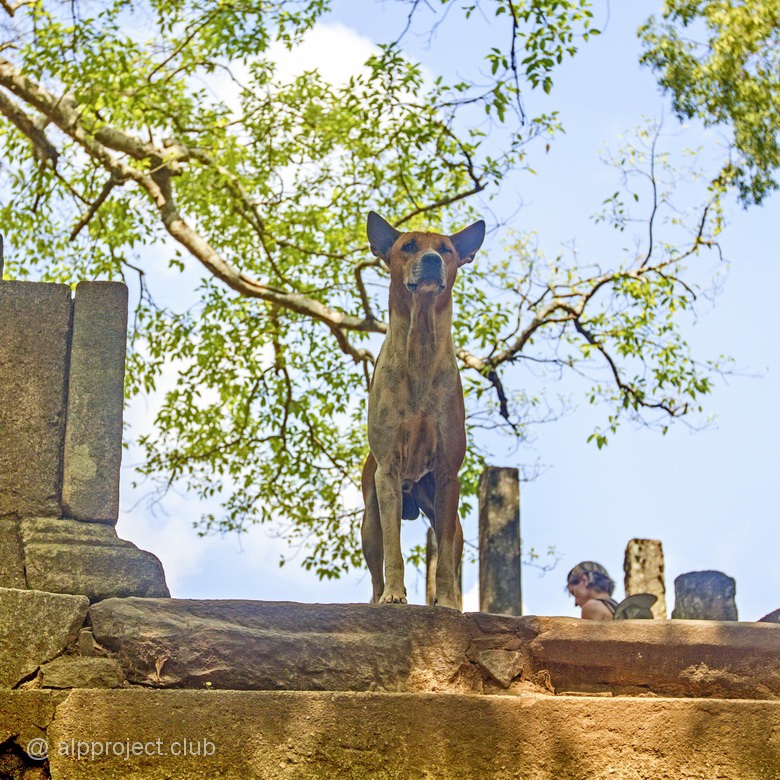
Object under protection

View of the East entrance from the inside. Once these poles were propping up the roof..
Immediately to the right of the entrance is a very interesting building – a seven-storey ziggurat, multi-stage religious building, typical for many ancient architectures. This is called Satmahal Prasada, it was built in the 12th century at the behest of king Nissankamalla. Truth is the sevens the most upper floor, unfortunately, collapsed. A stucco Buddha bas-relief is attached to the front of the second floor.

There is a Round house relics Vatadage behind the entrance on the left. You can get inside, but it is necessary to remove the shoes for all and hats for men.

By ring erected walls are located around the small stupa in the center, with four entrances oriented to the sides of the world, protected by statues of sitting Buddhas.



Such facilities in Sri Lanka were built specifically for the storage of relics. In this one, according to legends, was kept either the same Buddha's Tooth or a bowl for alms,which Buddha used. I must say, the history of Polonnaruwa ended in the XIII century by the invasion of conquerors from South India, and then all the local buildings were abandoned and destroyed. Now buildings' faces are the results of hard work of historians, archaeologists and specialists-reenactors, and many moments of the past still cause debate. In any case, the place is prayed for centuries, and already is holy one.
Opposite Vatadage is a rectangular building, it's name is Hatadage.

Some people believed that the Tooth of Buddha was stored in it. The walls are massive, strong, and there are large statues in the main room, perhaps they guarded the Shrine…


There are many things on the territory of the Quadrangle: the columns that once support the sacred buildings, Gal Potha - a Stone Book, an 8-meter slab on which one of the kings ordered to carve descriptions of his deeds, the statue of the standing Buddha…

And there is a sacred Mandala - a Buddhist sacred symbol that helps to better understand yourself, relax and feel the surge of strength..

And there is the sanctuary of the Bodhisattva – the being or person that made the decision to become a Buddha for the benefit of all living creatures and the place of growth of the unfading and inexhaustible fruiting tree of bodhichitta, giving freedom from fear even to those who have committed the gravest crimes..
Another temple, called Atadage, it is almost the oldest in the complex. It was built by king Vijayabahu in the eleventh century to save the Buddha's Tooth..

There is a construction near the southern border of the complex: vaulted temple Thuparama. It is dated from the reign of the same Vijayabahu, that means it is also very old. One of the few buildings whose roof is completely made of bricks. The walls have a thickness of about 2 meters.
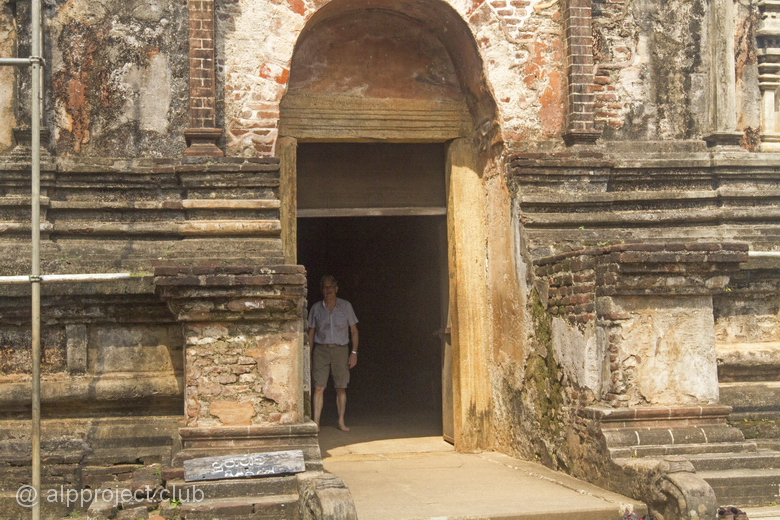
They say that walls were painted inside with frescoes, and the eyes of the statue of the big Buddha were encrusted with precious stones in such a way that they reflected sunlight and illuminated the entire room..

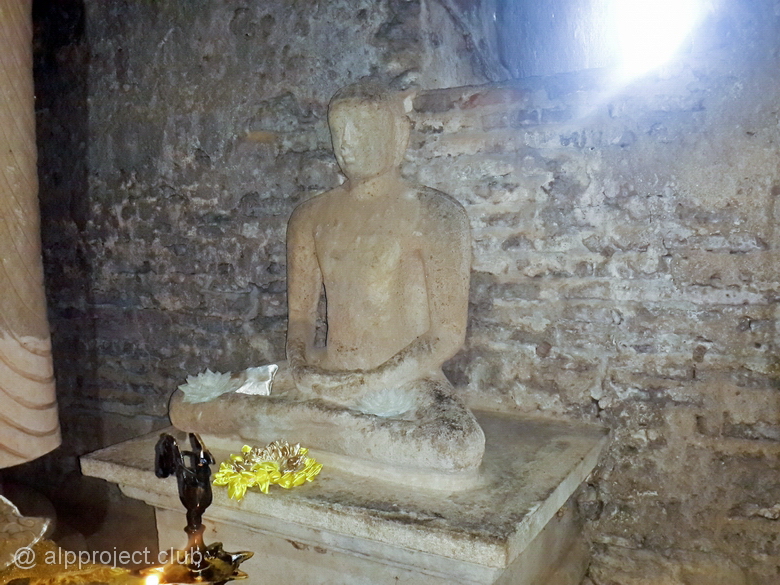


Some people say that the notorious Tooth was kept here.. It looks like they just periodically moved it from place to place, not otherwise :)
Well, it is enough about the Quadrangle, we are moving further North.
Rankoth Vehera, dagobah or stupa.

Usually they are monolithic, and this is no exception, only some brick cells with sacred images inside attached to it.


This one is the largest in Polonnaruwa (168 meters around), it was built by king Nissankamalla – the inscription on the platform to the South of the monument tells the story that he personally supervised the construction. There are flower altars on a wide sandy terrace, surrounding the stupa. Employees of the complex spread mats, for the convenience of visitors - you can walk around the stupa only barefoot but stones are hot.. A grandiose building!

Further to the North. Kiri Vehera translated from the Sinhalese like a stupa colored as milk. The temple was built by Queen Subhadra, the wife of king Parakramabahu. It is well known for its ideal proportions and as the best preserved stupa in Sri Lanka.

A three-room building for the storage of relics was found during the excavations of a large hill to the East of the monument, as well as smaller stupas, in which the remains of members of the Royal family and priests from the monastery were stored.

To the South on the contrary of Kiri Vehera there are the ruins of Lankatilaka – high tower, one of the finest Buddhist temples in Asia of the 12th century.

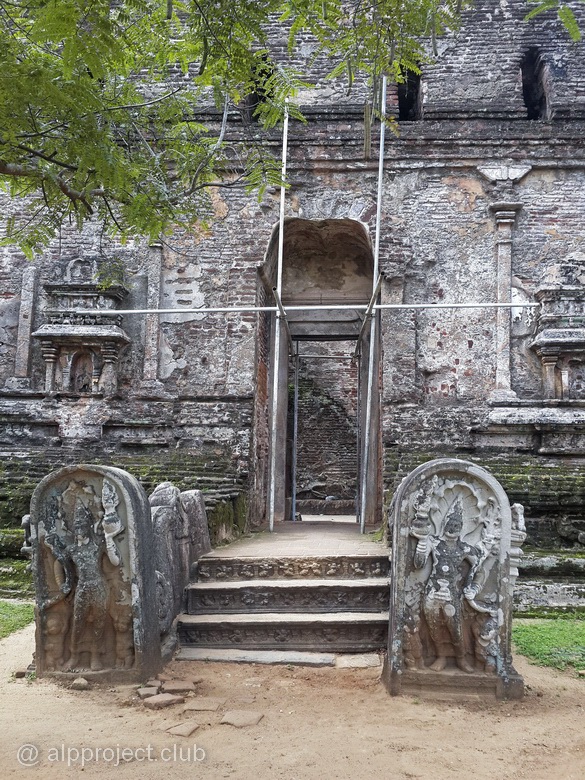
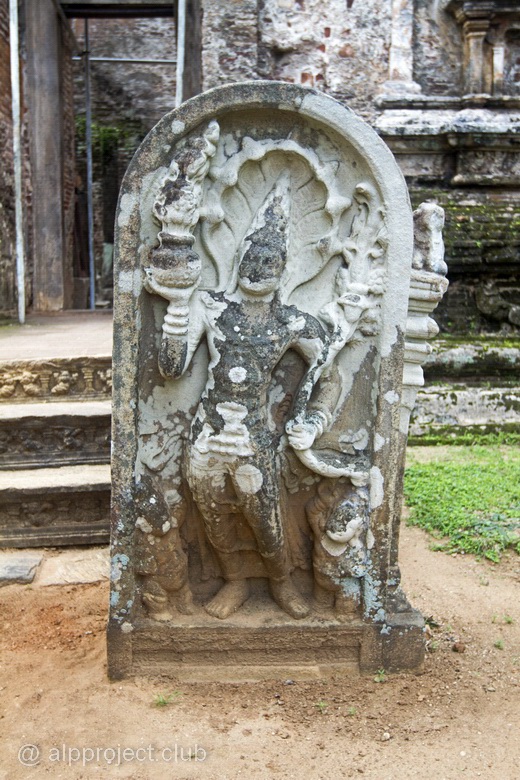
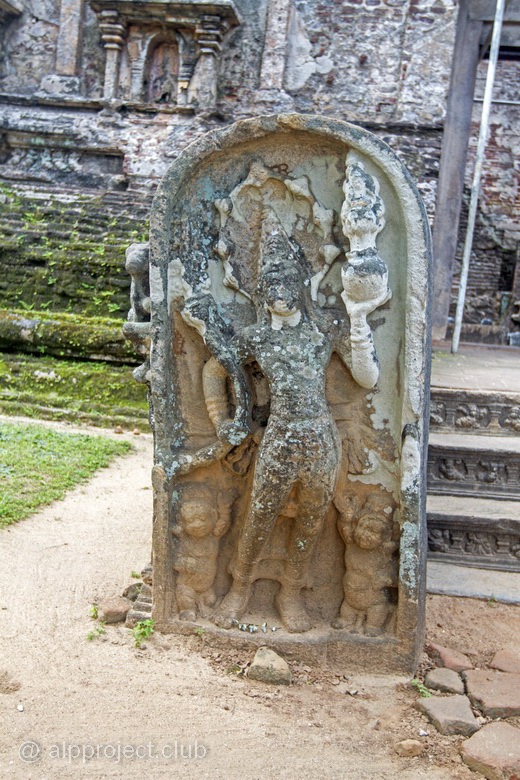
The huge brick building includes 17-meters-high walls, exquisite carved patterns and a colossal Buddha statue.
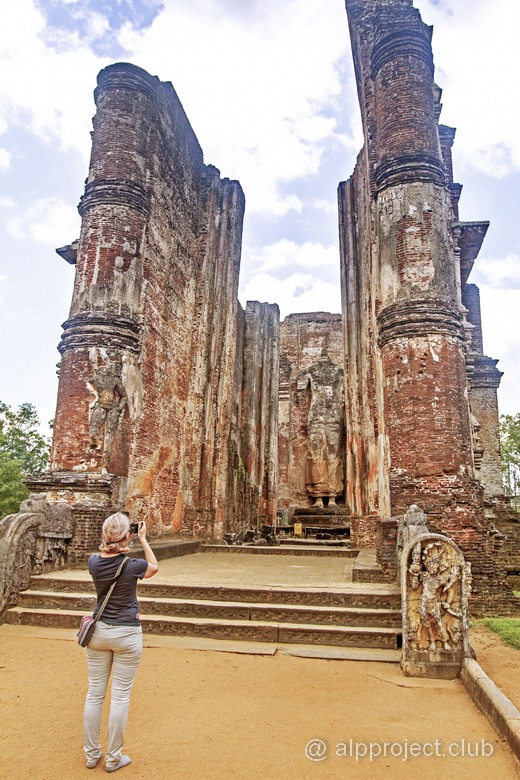
Roof is vaulted abd bricky, this is another excellent example of vaulted temples, called gedige, which, as you remember, are rare. Now the Buddha statue has no head, some of the conquerors removed it, but in earlier times the intact statue reached 12.5 meters height.
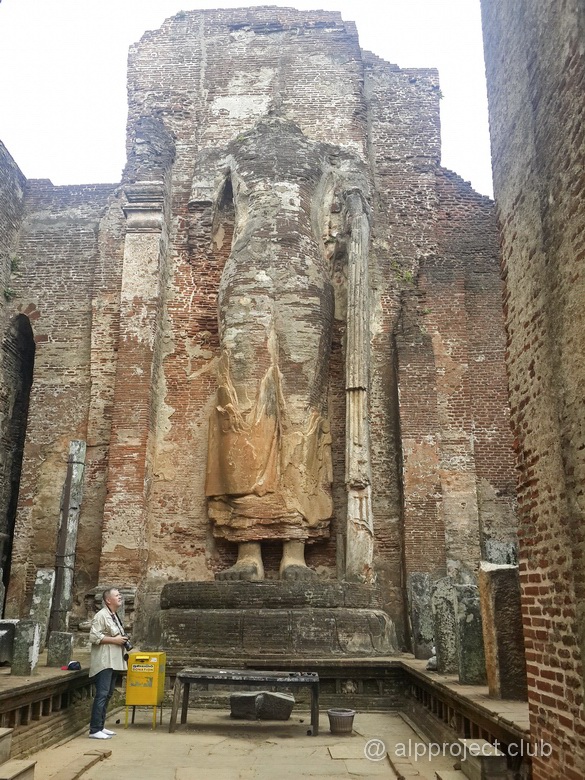
The outer surface of the walls decorated with plaster moldings, including the extraordinary beauty of the graceful figure of Nagini – female incarnation of the serpent-king, Nagaraja, which is also (they say) a rarity..

Our visit to ancient Polonnaruwa is coming to an end. Car parking near the lake.


We need to talk just about the most famous architectural monument here.
Gal Viharaya or the Temple in the rock, it has no analogues among the ancient temple complexes. It is a group of huge statues of Buddha carved directly into the monolith.

Granite is not the easiest material to work with, but the ancient masters managed to give the sculptures quite recognizable features: sitting Buddha - the very detachment and contemplation..

Pose and expression of face of the Buddha show the exceptional sense of compassion to all suffering creatures..
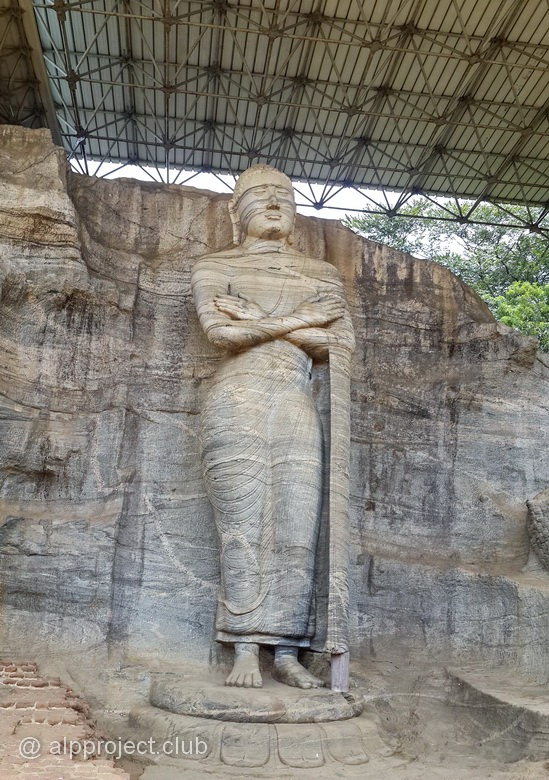
A slightly bent left leg and a dent on the pillow, which appeared under the weight of the head of the lying Buddha, whose statue has, by the way, 14 meters in length, make this colossal symbol of balance and self-control more alive.

THis is unique work of art, no doubt..
That's all that we had seen in the ancient Polonnaruwa that half a day. Look at our short movie about it, often everything looks more interesting in motion..
< episode 2 |
episode 4 > |


